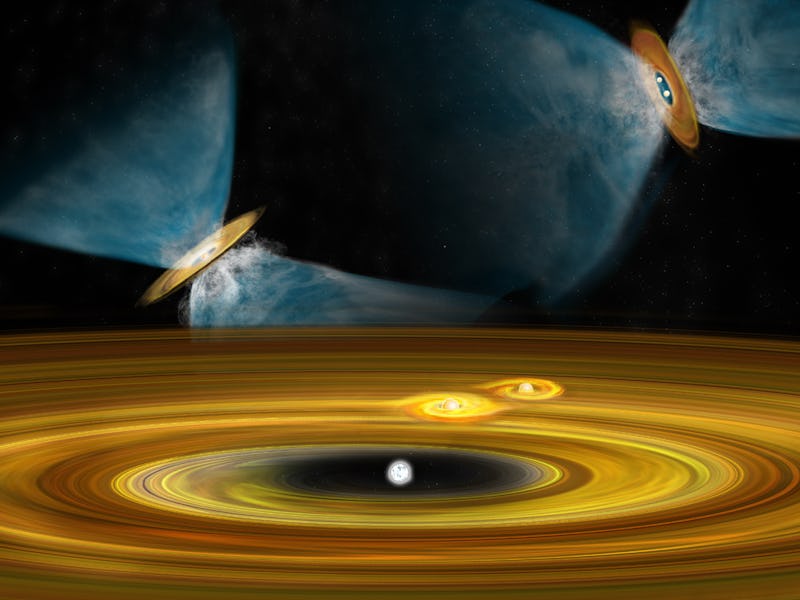New Deep Space Images Show Stars Forming From Whirlpools of Dust
New data collected using the Very Large Array Radio Telescope explains how stars grow near each other.

New close-ups of nearly 100 growing young stars are shedding light on how stars form. Scientists from the Netherlands’ Leiden Observatory have collected data on the Perseus molecular cloud, a hotbed of young star formation 750 light years away, using the National Science Foundation’s Very Large Array Radio Telescope. Though it had long been hypothesized that stars form as giant dust clouds collapse inward, the new images, presented at the annual meeting of the American Astronomical Society, point to the reasons some stars develop in pairs.
Systems where stars are separated by 75 times the Sun-Earth distance are considered to be “close,” and others where the distance is 3,000 times that are categorized as “widely separated.” The observations revealed that multiple-star systems — the kind where stars are widely separated — form when a part of a large dust cloud breaks off in a process called “turbulent fragmentation” and collapses into a star. Stars that are closer together form when an existing protostar’s disk fragments into smaller clouds.
If the disk of space dust is big enough — and the new data reveals that they’re a lot larger than theoretical models predicted — it can provide the raw material for planets to form as well. The widely upheld “molecular braking” theory predicts that disk size is limited by the increasing strength of the magnetic fields emanating from growing stars, but scientists observing unexpectedly large disks have suggested that either misalignment of the star’s rotation axis and magnetic field or a twisting of magnetic field lines might reduce the braking effect.
These findings illustrate how suns are formed in relation to each other, but they don’t totally rewrite the prior model, which goes something like this: As gravity causes giant clouds of gas and dusk to settle into a growing core, a rotating disk of the leftover material begins swirling around it, slowly collapsing into the center. Over time, the temperature and pressure in the core builds, triggering the thermonuclear reactions that cause the formation of a young star.
The new report represents the first time scientists have been able to observe young stars and in detail.